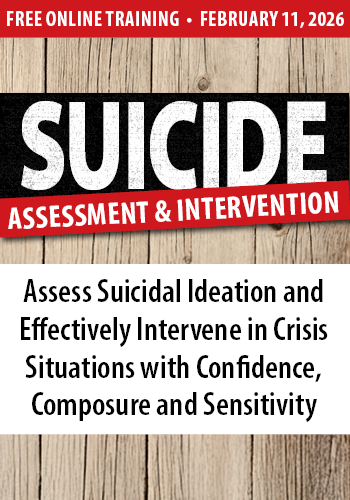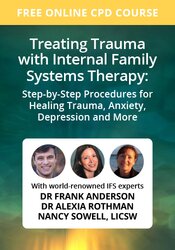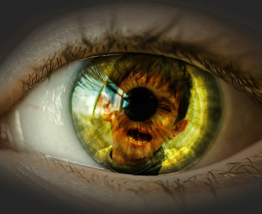Enrol in an online course today for flexible, self-paced learning—no fixed schedule required. Plus, enjoy lifetime access to course materials for convenient revisiting.
Schema Therapy for Trauma (4/5): Imagery Techniques

Dr Aaron Beck’s cognitive therapy model, developed in the Sixties, has since been expanded and enhanced to successfully treat all Axis I disorders, such as health anxiety, obsessive-compulsive disorder (OCD) and major depressive disorder. The emphasis in cognitive therapy is on modifying unhelpful cognitions, which are seen as the root cause of upsetting emotions and problematic behaviours. Dr Jeffrey Young (a close associate of Beck) developed schema therapy in the Eighties because many of his patients reported that cognitive change alone was not enough – “I know that makes sense, but I don’t feel any different,” they repeatedly told him.
So there is a strong emphasis in schema therapy on emotion-focused and ‘experiential’ techniques, in which clients are experiencing and not just talking about things like emotionally charged interpersonal conflicts, memories and past or present imagery. These techniques are especially important when working with trauma, because traumatic experiences – whether single or repeated incidents – leave a mark on every level of our mind, brain, body, hormonal and nervous systems. Consequently, successful treatment needs to effect healing at every level of the human organism, not just turn maladaptive cognitions into adaptive ones.
The power of imagery techniques
Experiential techniques in schema therapy can be divided into three main areas: relational, imagery and chair work (which will be the focus of next Friday’s final series post). The use of imagery is not unique to schema therapy – it has been applied in diverse approaches ranging from clinical hypnosis to mindfulness meditation. But few approaches match schema therapy’s creativity and richness in using imagery at every stage of the process – from initial assessment and diagnosis, to working with modes, facilitating cognitive change, reducing maladaptive behaviours, ‘rescripting’ of traumatic memories and building present- and future-focused Healthy Adult resources.
Working with Emma, a client struggling with complex trauma, her treatment was divided into three main phases: bonding and stabilisation, trauma-focused work and behaviour change/integration of new learning. Emma had a number of highly upsetting and emotionally charged memories of both parents shouting aggressively at her and calling her ‘stupid’ and ‘worthless’ on a daily basis. When she was stable and well-resourced enough to reach the trauma-focused stage, we worked on five core traumatic memories. With each memory, I rescripted them by getting her to close her eyes and imagine herself in the situation – speaking first-person, present-tense to make the experience more vivid and real. I then entered the image and protected her from the abusive parent, before comforting and soothing Little Emma in the imagery.
Imagery rescripting in action
Here is an excerpt from our work on ‘de-traumatising’ a memory:
Therapist: So Emma, let’s work on that upsetting memory we discussed last time. Please get comfortable, close your eyes and put yourself right back into that situation when your mum screamed at you before school.
Emma: OK, I’m there.
T: How old are you? (Monitoring her voice tone, facial expression and body language. She looks suddenly small and hunched).
E: I’m seven.
T: Can you look around and tell me what you see? (Makes the imagery more immediate and real).
E: I’m sitting at the kitchen table and mum is at the sink, with her back to me.
T: And what’s happening?
E: Mum is drunk. She’s really angry because she has to make a packed lunch for a trip and I forgot to tell her. She keeps screaming at me and telling me I’m stupid and she hates me.
T: I’m so sorry, that sounds absolutely horrible. How are you feeling? (Warm, soothing voice tone and using simple language that a seven year old could understand).
E: I just feel so scared and sort of empty inside, like I don’t exist or something.
T: I’m not surprised Emma – you’re so young and that sounds really scary and upsetting.
This continued until I was able to enter the image, stand in front of seven-year-old Emma to protect her, tell mum firmly that this was not acceptable, she must never scream at Emma like that again and I would be contacting social services to work with the family.
I then took Emma out for a walk to the park, where we talked and I helped her feel calm and protected, focusing on those new feelings in her body (it’s key to focus on bodily affect, both negative and positive – and focusing on these positive emotions for 30 seconds or more helps ‘hard-wire’ them to this new memory). We did this for four sessions in a row until we had de-traumatised the memory and enabled neurobiological/schema-level healing.
It’s important to note that this is a slow, painstaking process and that this imagery work takes place within the framework of extensive relational, cognitive and other techniques to address the complexity of Emma’s wounding and problematic ways of thinking, feeling and behaving. There is no magic bullet with complex trauma and our relationship was responsible for about 70 per cent of the healing for Emma. But imagery offers a powerful, effective and highly creative way to work with trauma, so do consider exploring it and incorporating imagery techniques into your approach, whichever modality you specialise in.
This case study is a composite of various clients – all names and identifying details have been changed.

















